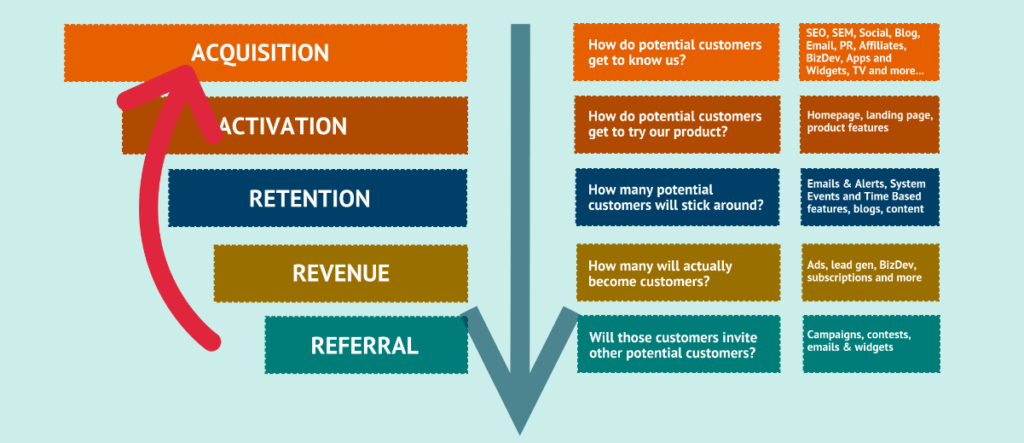AARRR metrics, also known as Pirate Metrics, is a framework that is used to track and measure a company’s performance. AARRR stands for acquisition, activation, retention, revenue, and referral.
Pirate Metrics was first proposed by Dave McClure, founder of 500 Startups. It is now very popular amongst product managers and growth hackers in leading companies across the world for how it simplifies and breaks down a product’s user lifecycle into 5 trackable metrics.
AARRR stands for:
Acquisition: How many customers are acquired?
Activation: How many of the acquired customers are active?
Retention: How many of the active customers are retained?
Revenue: How much revenue is generated from the retained customers?
Referral: How many of the retained customers refer other customers?

AARRR metrics can be used in product management to help measure the performance of a product and identify areas for improvement.
By tracking these metrics, product managers can make data-driven decisions that drive growth and success.
One popular example of a company that uses AARRR metrics is Dropbox. Dropbox, a file hosting service, uses AARRR metrics to measure the performance of their product and identify areas for improvement.
Acquisition: Dropbox tracks the number of new users who sign up for their service, including both free and paid accounts. They also track the source of these new users, such as referrals from existing customers or paid advertising campaigns.
Activation: Dropbox tracks how many of the new users who sign up actually begin using the service. They measure this by tracking how many users complete the setup process, such as uploading their first file or inviting others to share a folder.
Retention: Dropbox tracks how many users continue to use the service after the initial signup. They measure this by tracking the number of active users over time and the number of users who upgrade to a paid account.
Revenue: Dropbox tracks the revenue generated from its users. They measure this by tracking the number of paid users and the amount of revenue generated from each paid user.
Referral: Dropbox tracks how many of its users refer others to the service. They measure this by tracking the number of users who invite others to join and the number of new users who sign up as a result of a referral.
By tracking these metrics, Dropbox is able to identify areas for improvement and make data-driven decisions to drive growth and success.
For example, if they noticed a decline in retention, they can investigate the root cause and improve the product features that are driving users away. Additionally, if they noticed an increase in referrals, they can focus on improving the referral program and incentivizing users to refer others.
To track AARRR metrics, businesses can use a combination of tools such as Google Analytics, Mixpanel, and Amplitude to track website traffic and user behavior, and a CRM system to track customer information and revenue.